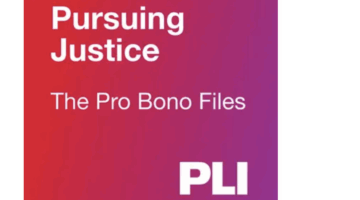 In last week’s column, I discussed the strategies for writing a general counsel resume. I received dozens of messages and additional questions. Some of those questions centered around resume format, length, and style. I wanted to spend this week diving into the common mistakes I see in legal resumes and how to fix them.
In last week’s column, I discussed the strategies for writing a general counsel resume. I received dozens of messages and additional questions. Some of those questions centered around resume format, length, and style. I wanted to spend this week diving into the common mistakes I see in legal resumes and how to fix them.
Modernize Your Resume Font And Formatting
When I graduated law school in 2003, my resume was in Garamond (a variation of Times New Roman), and my headings were formatted as a column with left justification. I kept using that template (which I acquired from my law school career services) throughout my 12 years of practice. Many legal resumes still follow that very same format.

Pursuing The Pro Bono Story: A Conversation With Alicia Aiken
This Pro Bono Week, get inspired to give back with PLI’s Pursuing Justice: The Pro Bono Files, a one-of-a-kind podcast hosted by Alicia Aiken.
In today’s digital age, we must abandon the resume template from the 1990s and early 2000 eras. For one, it causes too much eye shifting to determine where headings end and where they begin. Second, Times New Roman and Garamond are considered outdated. In 2015, I was quoted in a HuffPost article that deemed Times New Roman the sweatpants of resume fonts. In essence, while it’s a comfortable font and often the default, it doesn’t give off the best presentation. Instead, use a sans serif font (Arial, Calibri, Helvetica, etc.) in your resume because there is no curvature in the letters to constrict the digital readability.
In addition to using a modernized resume font, centering your headlines for your “Professional Experience” and “Education” sections are better. This is because a reader’s eyes naturally gaze at the center of a page. I am a big proponent of making the headlines clear as they separate sections within the resume, making it easier for the human eye to parse through. Consider using subsections if you have additional career experience that may differentiate you (e.g., prior career as an accountant or financial advisor). The key is to play into the psychology of the reader and make the resume as readable as possible.
Two-Page Resumes Are The Norm For Lawyers
Unless you are an entry-level attorney, chances are your resume will be two pages. Don’t try squeezing all the information into a single page just to fit that one-page myth. Your resume should be as long as it needs to be in order to properly convey your experience. If you’ve been in practice for 20-plus years, your resume may need a third page to convey your speaking engagements, publications, and board leadership experience while keeping the meat and potatoes of your resume on the first two pages. Keep in mind that the top third of your resume (above the fold) is prime real estate for you to provide a roadmap into your career highlights and bestselling career assets. Think of it as the back of a book jacket that provides the summary to entice the reader. This allows the reader to have a brief introduction into the essence of who you are.

3 Ways Lawyers Are Finding New Efficiencies With AI
Those who’ve adopted legal-specific systems are seeing big benefits.
Give Examples Of Transactions
Most legal resumes fall flat in providing support of key results, key outcomes, and key transactions. These resumes will often have 10 to 15 bullet points of responsibilities that read like a job posting. It’s not enough to say you prepared pleadings, took and defended depositions, and drafted motions for summary judgment. Think about the outcomes of the dispositive motions, or when you second chaired a trial and argued a motion in limine. Consider major transactions you’ve led or worked on — showcase the valuation and impact it had for your client (without violating any attorney-client privilege). The key is to give weight to the work you’ve done in a summarized fashion with no more than four to six bullet points per role. The further back you go, the more remote things become, and the less detail is necessary. For example, if you’re a law firm partner or a general counsel, the stuff you did 15-plus years ago as a budding junior associate will be far less relevant to your executive and business leadership if you’re applying to your dream role as a chief legal officer. Remember, your resume should build enough detail and context around your experience that it provides a snapshot which can later be expanded on an interview. It doesn’t need to include a laundry list of everything you’ve done.
When it comes to writing a legal resume, or any resume for that matter, 85% of it is strategy — knowing what your audience is looking for in a target candidate as well as understanding specific targets to hit in your resume for specific functional skill sets. It is a unique skill, and writing your own resume is tough because you’re looking at it from a subjective viewpoint instead of the objective lens of the interviewer.
Have a follow-up question for me? Reach out via LinkedIn.
Wendi Weiner is an attorney, career expert, and founder of The Writing Guru, an award-winning executive resume writing services company. Wendi creates powerful career and personal brands for attorneys, executives, and C-suite/Board leaders for their job search and digital footprint. She also writes for major publications about alternative careers for lawyers, personal branding, LinkedIn storytelling, career strategy, and the job search process. You can reach her by email at [email protected], connect with her on LinkedIn, and follow her on Twitter @thewritingguru.